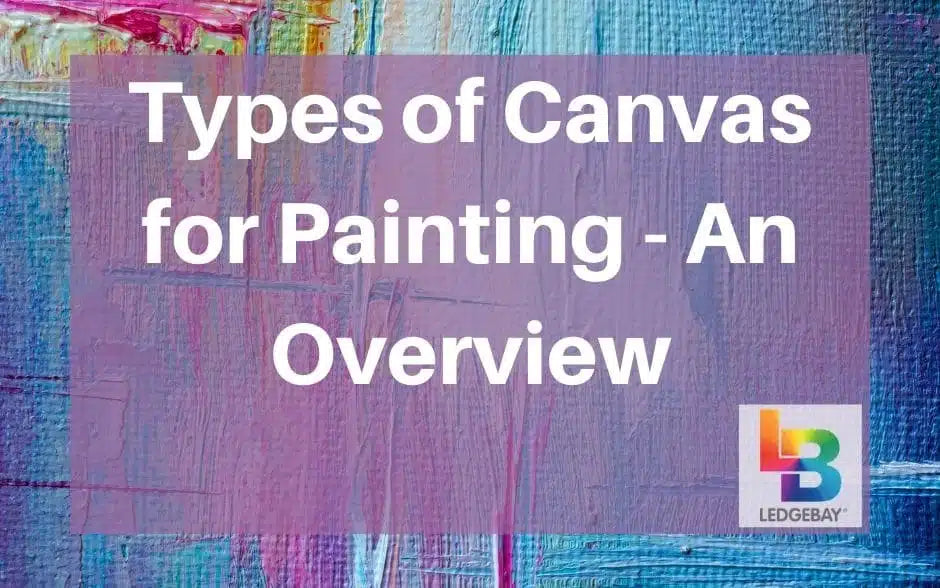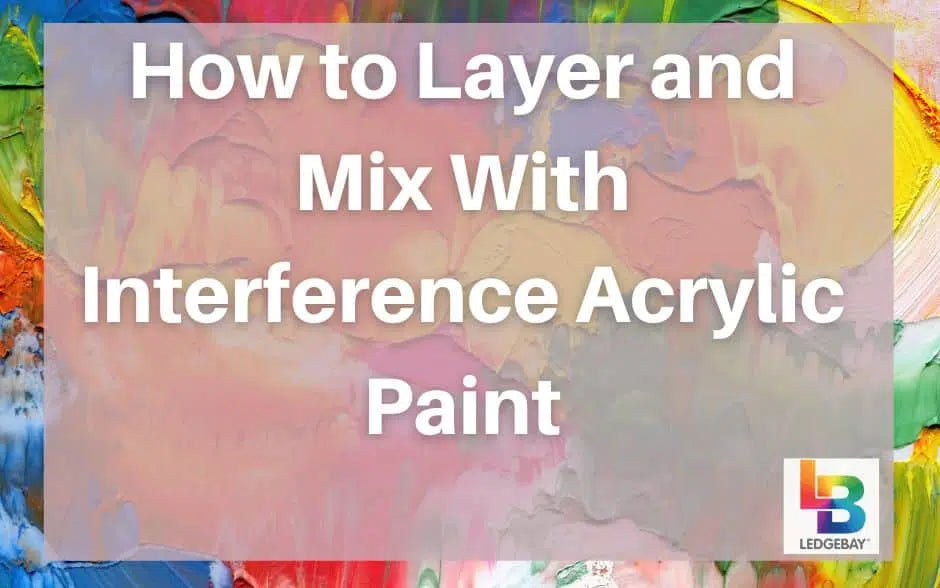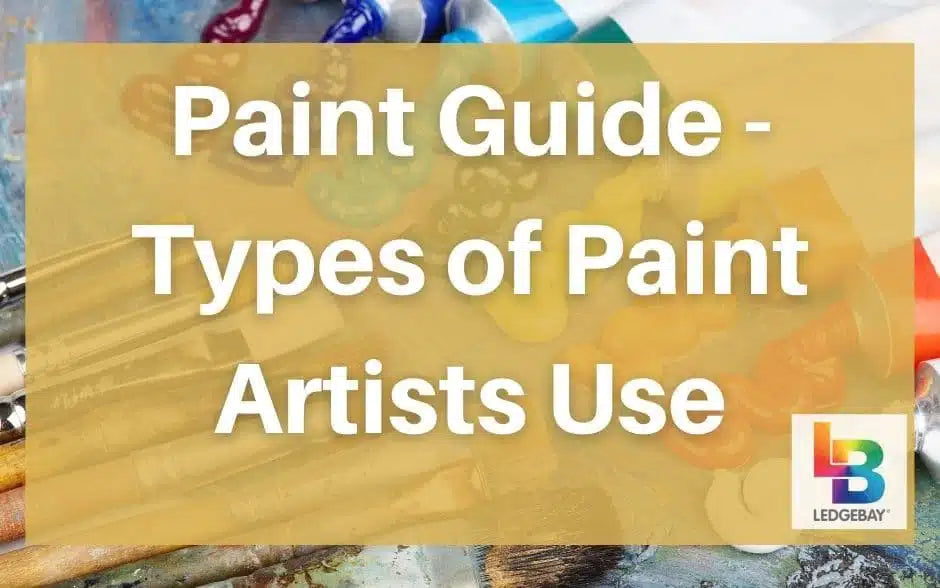Not all canvas are created equal. These types of canvas for painting are the most common on the market and in the paint by numbers kits:
Do you know that the very first canvases were worth a fortune? In today’s money, a medium-sized canvas could cost around $1500. Still, artists bought it and used it to create timeless works.
That was around the 16th century when the norm was painting on hardwood. That medium was perfect for oils , but it was quite heavy, and there were clear limits to how large the painting could be. That’s why canvas quickly gained popularity, and it’s still the preferred medium for most artists.
The Basic Types of Canvas for Painting
[amazon box="B000KNNVJY"]
There are five basic types of canvas that you’d readily find in art stores. Most artists dabble with a bunch of these varieties depending on the kind of work they’re doing. For example, they’d use a fine brand of linen canvas for a commissioned painting , while canvas paper would be their medium of choice for an outdoor study.
Let’s get into the details of what characterizes each type of canvas , and what’s the best way to use it.
1. Cotton ‘Duck’ Canvas
[amazon box="B01M19XXA2"]
This type of canvas is the most popular and versatile among artists, in particular, the 12 oz primed variety. It’s a heavy fabric with a visible texture and relatively flexible nature. It’s not difficult to stretch on a frame , and it lends itself nicely to various kinds of priming. Cotton Duck canvas is available in various weights, weaves, and formats. Plus, it’s easy on the pocket and not at all hard to find. Some artists buy it wholesale from fabric stores, then prime it as they prefer.
This might be a bit too complicated for other artists who aren’t too keen on cutting and prepping. They would rather work on a previously primed canvas. Hobbyists naturally share the same sentiments and prefer getting a canvas they can use right away.
There are also framed canvases, and these encourage even more people to start painting . Hobbyists who enjoy paint by number kits often use this type of canvas as well. It usually comes with the package, and even if they download patterns online and buy the supplies separately, it’s often a good choice.
By the way, this type of cotton has nothing to do with ducks, and the word comes from the Dutch word ‘doek’, which means cloth or fabric.
[amazon box="B083FGS8DB"]
2. Italian Poly-Cotton Canvas
[amazon box="B075Y2MRVC"]
This type of canvas is made for detailed paintings where the hard texture isn’t too suitable. It’s perfect for portraits, soft landscapes, and other works where a smooth surface is needed. Italian poly-cotton is a fabric that’s finely woven to the point that you can’t discern the grain in its super-fine varieties.
This canvas usually has a bit of polyester mixed with cotton , which gives the fabric higher flexibility. It’s known to retain its shape more than the cotton duck which becomes a little loose after a while.
This blended canvas doesn’t come cheap, and that’s one of the main reasons that it’s not too widespread. In addition, the extra fine texture isn’t always desired. Many artists like the grainy textured surface of the cotton duck canvas , and they employ its effects well in their paintings .
Moreover, the roughness of the cotton duck canvas can be tamed by applying several layers of gesso and sanding the surface after each layer. It wouldn’t be as smooth as the polycotton though.
The Italian poly-cotton canvas is thus a niche fabric that appeals more to professional artists than enthusiasts or hobbyists. It’s certainly a beautiful weave that adds glam and elegance to artworks.
3. Linen Canvas
[amazon box="B00ELGH7KK"]
Linen or flax canvas is among the oldest fabrics used in making canvases . Interestingly, linseed oil which is the base of oil paints is extracted from the same plant. This material has proved its durability and stability through the thousands of masterpieces in museums. These paintings have already lasted for hundreds of years, and still, look great.
Linen is characterized by its fine threads and tight weave. It’s a stable strong fabric that wouldn’t warp, relax, or shrink after use. However, it’s a bit difficult to stretch on a frame .
It’s a textured fabric with a naturally dark color. Priming and prepping this canvas changes that base color into a white surface. You can further tint it with a suitable ground to compliment your subject matter.
This canvas doesn’t come cheap, and it’s a medium that adds value to any painting . There are three well-known brands that make exceptional linen canvases, which are Claessens, Belle Arti, and Artfix. The first one is Belgian and it’s more popular with professional artists than the latter types.
4. Watercolor Canvas
[amazon box="B07SLB4V5J"]
This type of canvas is often made from 100% tight weave, but it’s different from the kind that’s prepped for oils. It has a higher affinity for water, supports the diffusion of color, and it doesn’t absorb the paints excessively to the point that they look flat or dull.
A watercolor canvas is also suitable for gouach and tempera. Some varieties are also primed for pastel and acrylic work. These canvases come in a variety of forms, weights, and thicknesses. You can even buy them framed if you like.
The heavy-weight pure cotton varieties are often the best kinds, so it’s expected to find a hefty price tag attached to them. And that naturally increases if the canvas is prepped with gesso .
5. Paper Canvas
[amazon box="B004GXBXSA"]
This isn’t a canvas in the traditional understanding of that kind of fabric. Paper canvas is often made from heavy-weight paper that’s textured like a canvas. It comes at an affordable price, and usually, you can get a glue-bound tablet of sheets that you can take anywhere.
A paper canvas can be primed for oils , acrylics, watercolors, pastels, or it could be a general usage medium. It’s best suited for outdoor sketches, Plein air studies, or simply for practicing different painting techniques .
Most students and hobbyists are well acquainted with this type of canvas. It has the same feel of cotton or linen canvas, but it’s much easier on the pocket. It thus encourages beginners to experiment with styles and colors without a costly investment in supplies.
How to Choose the Right Types of Canvas for Painting?
As you browse through the multitude of canvases in art stores, you might become a little giddy with all the varieties on display. To narrow down your choices a bit, you might want to consider the following points:
- What is the medium you are using? Canvases are often designed specifically for different types of paint. A canvas primed for oils is very different from one made for watercolors.
- What is your skill level? If you’re a hobbyist, then, cotton duck or paper canvases should be appropriate. As you gain more experience, you can work with the more expensive linen or fine grain cotton canvases.
- What’s your painting style? If you like to do detailed work then a fine-grained linen canvas should be good. On the other hand, a rough texture might give a dynamic feel to your paintings.
- How often do you paint? If you’re a prolific artist, then you might want to buy rolls of canvas rather than smaller panels. You could also buy them folded, but this manner could leave a few creases here and there.
- Do you prefer a ready-to-paint or a bespoke canvas? Some canvases come primed, prepped, and framed. While others are shipped as blank fabrics of any size. You can pick and choose as you like.
Types of Canvas for Painting - In Conclusion
[amazon box="B083FGNMFH"]
Canvases are essentials for any artist. And choosing the correct type could augment the appearance of a painting and add to its value.
Material, weave, and weight, are the most important factors to consider. And luckily, there are many choices easily available in art stores.
To view a complete gallery of our paint by numbers kits, CLICK HERE!











